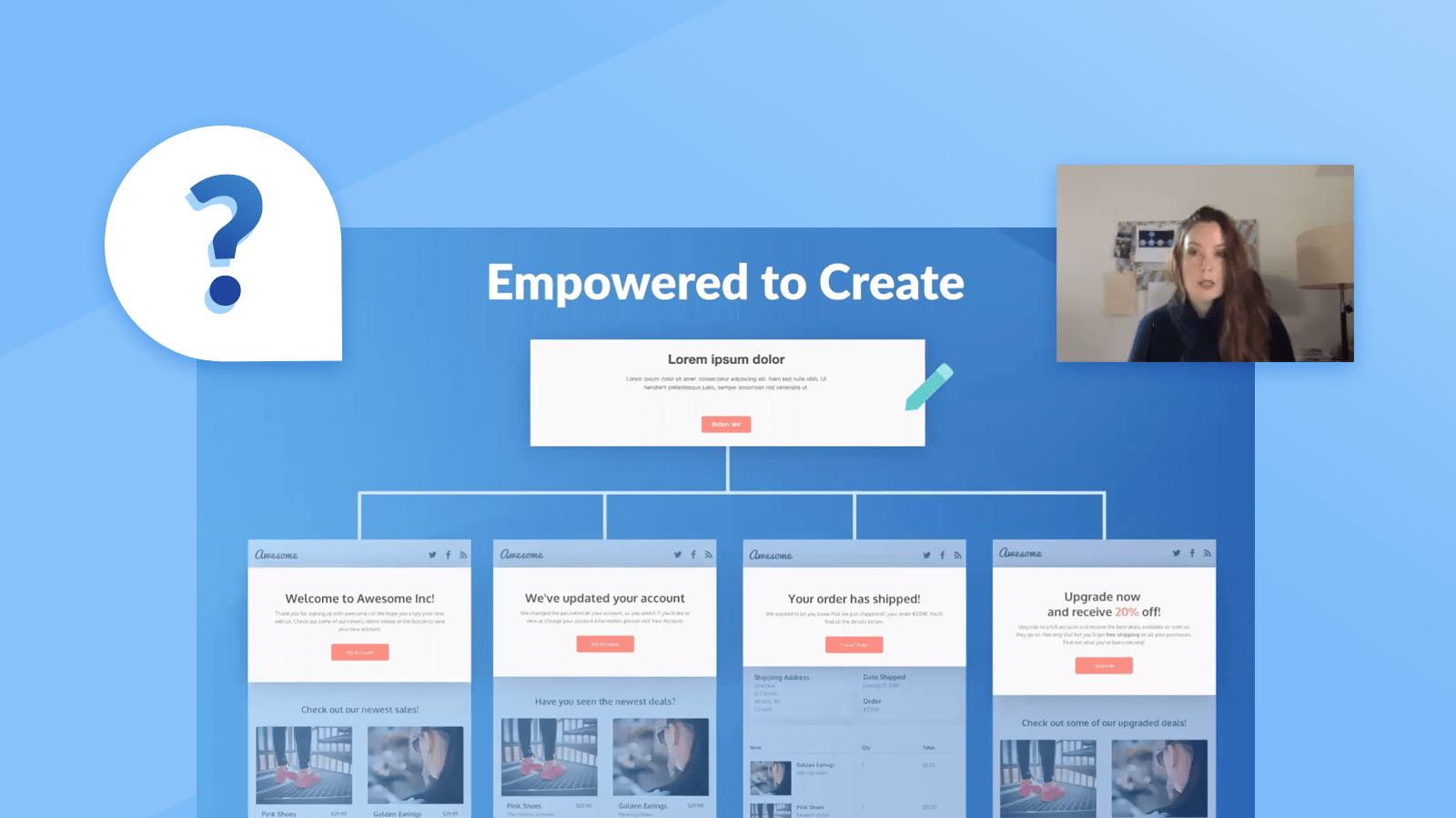In the first two webisodes of our 3-part webinar series on modular email design, we shared how teams are creating beautiful, responsive email templates without having to write code. One of the best things about these webinars is that they give us a chance to respond to the audience’s questions about modular email design and email production in real time. In this blog post, we’re going to give you a recap of some of the questions we were asked that might help you, too.
If you didn’t have a chance to watch the recording with Avelina and Aileen, check it out here.
And, if you have a question about modular email design or about using Dyspatch that wasn’t covered in the webinar or in the topics below, don’t hesitate to reach out and ask. We’d love to hear about your experiences in email production.
Question 1: Can I put personalized, dynamic content in the modules? And use for loops, like first name in a salutation?
Absolutely! The Dyspatch Markup Language (DML) is also a templating language, so we have a way for you to add for loops, and variables like first or last name into an email. And the nice thing about this process in Dyspatch is that you write the template in one language, but can export it to whatever language your email service provider (ESP) uses, whether that’s Handlebars or Cheetah (and more)! So it’s an easy templating language to learn and use. We talk a bit more about DML and how useful it is to write emails in this blog post.
The next webinar, part 3 of the series, will unpack DML a bit more for you. We love using DML to put together our own templates here at Dyspatch, and can’t wait to go into more detail about DML and how it can help you create beautiful, mobile-friendly content modules faster than you ever could with email HTML.
Question 2: How do teams work in Dyspatch? We have teams collaborating on multiple projects. Can users be part of more than one team, with different permissions in each?
Teams in Dyspatch provide a clear and easy to group people who work together with the same permission level, and add them to a workspace to ensure that they get notified of the changes that are relevant to them.
So, for instance, a group of marketers can be added to a marketing team in Dyspatch, which ensures that they get notified by email every time a chance happens to the template they’re working on. Similarly, you may create a team for the localizations team to be able to make changes to templates and upload translations.
And in Dyspatch, users can be part of multiple teams with different permissions levels for each workspace. Dyspatch permissions are flexible so that it’s easy to add collaborators, even if you don’t want them making edits. That means that if you’re an editor in one workspace, you could be just a viewer in another, depending on how much you’re contributing to the email templates.
Question 3: Is modular email design mostly for transactional emails? Or can it be used for promotional emails, too?
When we launched Dyspatch, we focused on transactional emails, but we quickly found that the platform works really well for marketing or promotional emails as well!
And since modular email design helps to guarantee brand and design consistency, as well as ensure that your emails are mobile-friendly and quick to edit, Dyspatch customers have consistently shown that Dyspatch is the one tool they can use for all of their email production.
Our own marketing team uses Dyspatch for our product newsletters (to share blog posts like this one), but also for webinar reminders, as well as transactional emails.
And because teams can organize their templates in workspaces according to team, or country, or topic, it’s easy to store templates and make them accessible to the right people in Dyspatch.
Until next time, happy email production and happy holidays from everyone here at Dyspatch.
